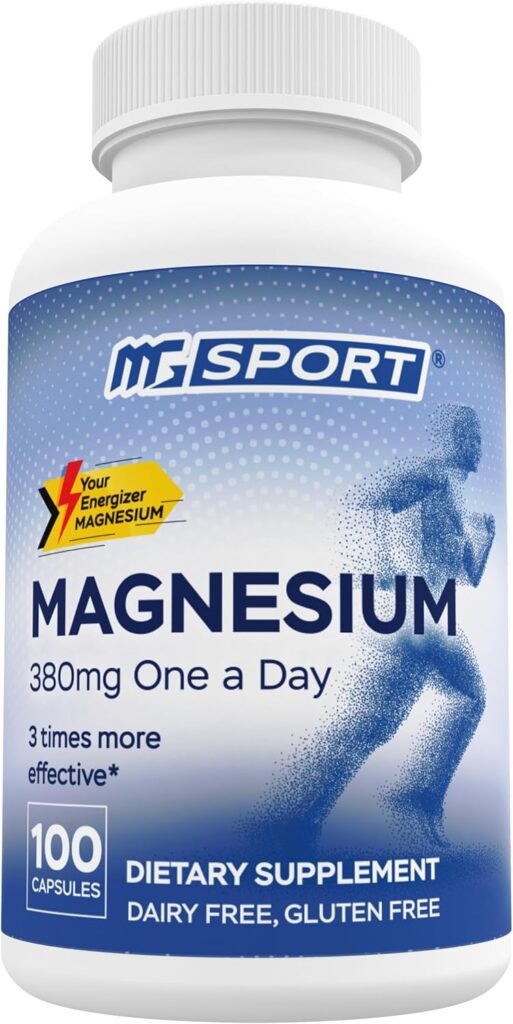Calf cramps can strike suddenly, causing intense pain and discomfort, often during physical activity or at night.
Understanding the causes of these cramps is key to managing and preventing them.
In this post, we will explore five effective ways to ease calf cramps, starting with what causes calf cramps.
Let’s dive in!
What Causes Calf Cramps?
Calf cramps can occur for several reasons, including:
- Dehydration: Insufficient fluid intake can lead to muscle fatigue and cramping.
- Mineral Deficiencies: Lack of essential minerals, especially magnesium, potassium, and calcium, can disrupt muscle function.
- Prolonged Inactivity: Staying in a stationary position for too long can lead to muscle stiffness and cramps.
- Overexertion: Engaging in intense physical activity, particularly if your body isn’t used to it, can result in muscle cramps.
- Poor Circulation: Reduced blood flow to the muscles may trigger cramps.
5 Ways to Ease Calf Cramps
1. Take a Magnesium Supplement
One of the most effective ways to alleviate calf cramps is by taking a magnesium supplement.
Magnesium plays a vital role in muscle function, helping to regulate contractions and promote relaxation.
Regular supplementation can help reduce the frequency and intensity of calf cramps, especially for those who are active or have a magnesium deficiency.
Choose a high-quality magnesium supplement and consult with your healthcare provider to determine the appropriate dosage.
Out of the many magnesium supplements I’ve tried, MGSport’s Magnesium is my personal favorite.
MGSport’s Magnesium is an excellent choice for supporting calf cramps due to its high absorption formula enriched with vitamins B6, D, and E, which enhance muscle function and relaxation.
This supplement not only helps with cramps but also supports overall muscle health, making it suitable for everyone from athletes to those leading a more sedentary lifestyle.
With clinically tested absorption rates three times higher than magnesium citrate, MGSport ensures you get maximum benefits in just one easy-to-swallow capsule, promoting comfort and mobility with each dose.
Simply take one capsule per day and you’re good to go!
2. Stay Hydrated
Dehydration is a common trigger for calf cramps, making it essential to maintain proper fluid levels in your body.
Aim to drink at least eight 8-ounce glasses of water daily, and increase your intake during exercise or hot weather.
Incorporating electrolyte drinks can also help replenish essential minerals lost through sweat.
3. Stretching and Strengthening Exercises
Regular stretching and strengthening exercises can help improve flexibility and reduce the risk of calf cramps.
Before and after physical activity, take time to stretch your calf muscles with exercises like calf raises and wall stretches.
Incorporate strengthening exercises into your routine to build muscle resilience.
4. Warm Baths or Heat Therapy
Applying warmth to cramped muscles can provide immediate relief by promoting blood flow and reducing tension.
Consider taking a warm bath or using a heating pad on the affected area when cramps occur.
This soothing heat can help relax tight muscles and alleviate discomfort.
5. Massage Your Calves
Gentle massage of the calf muscles can help relieve tension, improve circulation, and reduce the frequency of cramps.
If you experience a calf cramp, gently knead the area with your hands.
Regular self-massage or professional massage therapy can also support muscle health and relaxation.
Ease Your Calf Cramps
Calf cramps can be painful and disruptive, but understanding their causes and implementing preventive strategies can help ease the discomfort.
By taking magnesium supplements, staying hydrated, practicing stretching and strengthening exercises, using heat therapy, and incorporating massage, you can significantly reduce the occurrence of calf cramps.
If cramps persist or worsen, consult a healthcare professional for further evaluation and guidance.
With the right approach, you can enjoy greater comfort and mobility in your daily activities.
Thank you for reading!
Affiliate Disclosure
Some of the links on this site are affiliate links. This means that if you click on the link and purchase the item, we may receive an affiliate commission at no extra cost to you. I only recommend products or services that I believe will add value to my readers, however some (not all) do pay us to be on this blog. Your support and theirs helps keep this blog running, and I genuinely appreciate it.
Medical Disclaimer
The information provided on this website is for educational purposes only and is not intended as medical advice. This blog or the writer is not a licensed healthcare professional, and the content should not be used as a substitute for professional medical diagnosis, treatment, or advice. Always consult with your physician or other qualified healthcare provider before starting any new treatment or making any changes to your healthcare routine.
